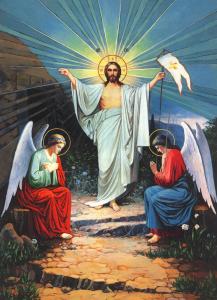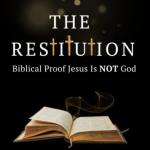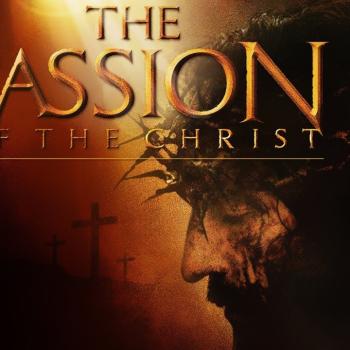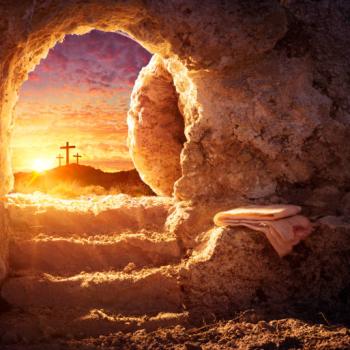
Three weeks ago I attended a conference in Houston at the Lanier Theological Library. I blogged about it soon afterwards, relating how Dr. John Lennox of Oxford University was the main speaker and that he delivered two lectures mostly about in artificial intelligence, but also on transhumanism and end times biblical prophecies.
Dr. Gary Habermas of Liberty University was also a speaker there the first day among a panel of four people that included Dr. Lennox. During that weekend, I had the privilege of discussing theology with Dr. Habermas on multiple occasions. It was a pleasure to speak with him since he is a very easy person to talk with.
Dr. Habermas is both a theologian and a Christian philosopher who has written 45 theological books. Throughout his professional career he has specialized in Jesus’ resurrection. He has written about ten books on the subject. Moreover, he is now finishing four, sizable volumes in a series on this genre to be published by the Baptist publisher B&H. The fist volume is due out next February. In the U.S., Dr. Habermas and Dr. William Lane Craig may be the most widely known authorities on the subject of the resurrection of Jesus. Both Dr. Habermas and I believe that Jesus’ resurrection is the very heart of the Christian gospel–the “good news” about Jesus.
I have done some research on Jesus’ resurrection as well. In my first book, The Gospels Interwoven, which was endorsed by evangelist Billy Graham, I have about 25 pages on Jesus’ post-resurrection appearances recorded in the New Testament. There are either ten or eleven of them. Half of that material is set in question form, such as, “Did the women leave for the tomb during darkness or after sunrise?” Then I try to answer these questions by appealing mostly to the writing of leading New Testament scholars. Moreover, right after Mel Gibson’s film, “The Passion of the Christ,” was released, in 2004, I spent the next 1.5 years in researching and writing a screenplay on Jesus’ post-resurrection appearances as well as a 100-page document I call an “apparatus” that justifies various scenes in the script on the basis of the Bible, archaeology, legend, and tradition.
I asked Dr. Habermas several questions, most of them about Jesus’ resurrection. My first question was, “Did Jesus appear to his Galilean disciples at Jerusalem or in Galilee, as the angel had told the women at the tomb?” (To grasp this seeming paradox, read John 20.19-29 and Mark 16.7.) Gary answered just as I believe–“it was both.” He then explained that they stayed in Jerusalem for the remainder of the Feast of Unleavened Bread, when the risen Jesus appeared to those two Sundays as they were gathered behind locked doors, and they then traveled home to Galilee where the risen Jesus appeared to them again as they presumably were gathered together with about 500 disciples in Galilee as reported by the apostle Paul (1 Corinthians 15.6).
Another question I asked Dr. Habermas was about the disciples’ meeting place on the Day of Pentecost. According to the New Testament, the resurrected Jesus appeared to his disciples multiples times and then, forty days after his resurrection, he led his apostles up the Mount of Olives, located on the east side of Jerusalem, and we read, “as they were watching, he was lifted up, and a cloud took him out of their sight. While he was going and they were gazing up toward heaven, suddenly two men [angels] in white robes stood by them. They said, ‘Men of Galilee, why do you stand looking up toward heaven? This Jesus, who has been taken up from you into heaven, will come in the same way as you saw him go into heaven” (Acts 1.9-11 NRSV).
The book of Acts then relates that ten days later, “When the Day of Pentecost had come, they were all together in one place. And suddenly from heave there came a sound like the rush of a violent wind, and it filled the entire house where they were sitting” (Acts 2.1). The text then says the disciples “were filled with the Holy Spirt and began to speak in other languages as the Spirit gave them ability” (v. 4).
So, I asked Dr. Habermas if the place where these disciples were gathered could have been the Upper Room where Jesus and the apostles ate the Last Supper. Gary answered by saying that he thought it was possible, but the main thing was that when the thousands of Jews heard the great sound of the rushing wind and therefore gathered to hear these disciples speaking praises to God in foreign languages, the disciples were then in the open air speaking to the large crowd. I agreed. We both then agreed that since the text says they were gathered in a house and sitting when the Holy Spirit came upon them, they must have been in a house and then came outside to speak to the crowd. For, Acts then says the apostle Peter delivered a message about Jesus being Israel’s promised Messiah and that God had raised him from the dead (vv. 22-36).
And I asked Gary about a few other things as well. So, it was comforting to me that we agreed completely on the details we discussed about Jesus’ resurrection and his post-resurrection appearances to his disciples.















